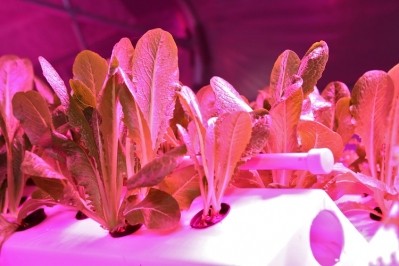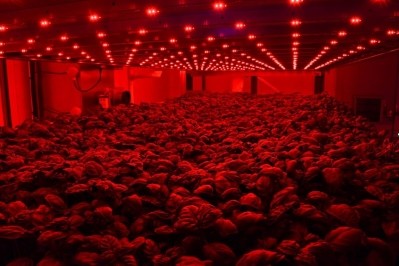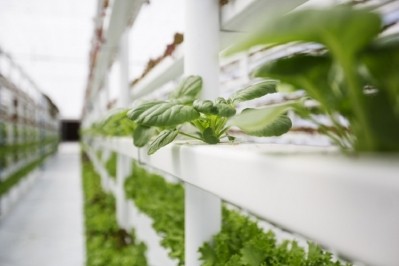Vertical farms of the future require genetically edited plants, says scientist
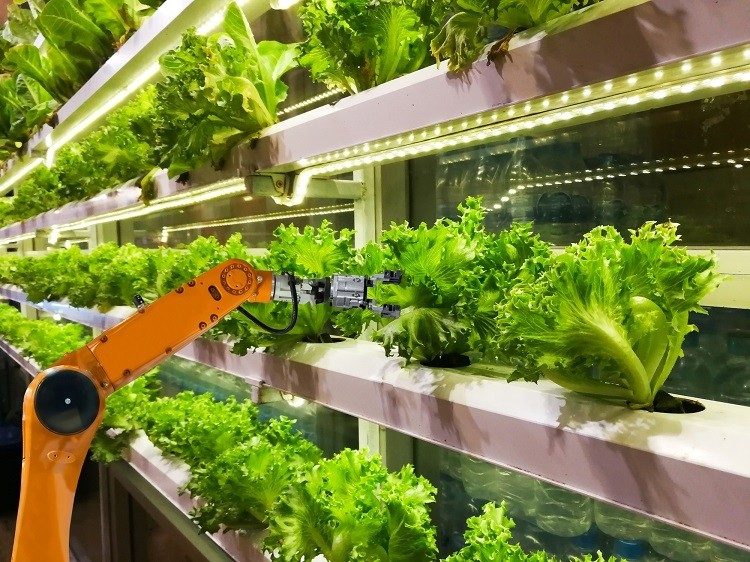
The impending need to feed almost 10 billion people by 2050 is fuelling innovation in the agri-food sector.
Vertical farming is one such example. Tipped to play an increasingly important role in global agriculture, ‘plant factories’ – as they are otherwise termed – are vertically-stacked, fully controlled environments used to produce food.
The technology has been praised for its potential to help societies meet elevated demand for food, without the need for additional farmland.
Analysts appear similarly persuaded. According to Global Market Insights, the vertical farming market is expected to expand by 25% by 2024, to reach a value of €11.4bn.
However, feeding growing populations with vertical farms, and using the same seeds and plants used in conventional agriculture today to do so, demonstrates a lag in innovation, suggests Aberystwyth University’s Professor Huw Jones.
Bridging the biotech gap
Vertical farming technologies are advancing, and fast. Today, it is possible to automate a number of processes in urban agriculture, including the sowing of seeds, and monitoring of LED lighting.
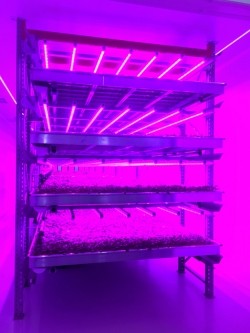
Climate – including temperature, humidity, and CO₂ levels – can also be controlled externally, and machine learning can be leveraged to help save electricity and water use.
In order to get the most out of urban agriculture innovations, plant technology will have to similarly advance, said the professor of translational genomics for plant breeding at the Westminster Food & Nutrition Forum last week in London. “The kinds of plants that we are going to ultimately have in [plant factories] are not going to be the same kind of plants that we have in soil.”
We have ‘huge innovation’ in hydroponic vertical farming, the professor continued, but “we are still using the old seeds”. What we are lacking, therefore, is the plant architecture itself, he stressed.
Professor Jones does predict this will change, but it will require gene editing to do so.
Greater understanding of DNA sequencing and genome editing, alongside reduced costs in gene sequencing, has helped to encourage interest in plant technology, he explained.
Plant-specific transcription factors, for example, have garnered much attention in food science. “Transcription factors are genes that control the transcription of other genes… in fruit and vegetable colour, texture, and aroma,” we were told.
As a result, scientists can alter the colour of tomatoes, or the smell of fruits, he continued. “We can make completely new fruits by harnessing these genes that control genes – [with] these MYB transcription factors.”
In vertical farming, gene sequencing could also help bridge the technology gap between vertical farming and plant architecture. “There is a lot of research underpinned by the understanding of the gene sequence. We understand how to change the internode length of these sorts of plants. [We know] how to change the fruiting patterns, so that we can make plants that are much more suitable to those kinds of new agricultures.”
From regulatory hurdle to opportunity?
In Europe, the scientific community regularly voices its support of genetic technologies. Both conventional genetically modified organisms (GMOs) and genetic editing tools such as CRISPR/Cas have been praised for their potential to help develop more robust crops in the face of climate change.
Genetic editing using CRISPR/Cas technology involves removing part of the genetic code, as opposed to GMO methods, which uses genetic engineering to insert new code.
However, EU regulation has put Europe ‘out of step’ with the rest of the world, argued Professor Jones, particularly in countries where ‘very simple genome editing’ falls outside of their GMO legislation.
Here, the professor is referring to the European Court of Justice’s (ECJ) July 2018 ruling. According to its decision, crops obtained by mutagenesis are classified as GMOs in Europe, as the techniques and methods of mutagenesis alter the genetic material of a plant in a way that does not occur naturally.
Describing this legislation as ‘too heavily politicised’ to onboard biotechnology, Professor Jones suggested the UK’s impending departure from the EU could present an opportunity for the sector.
“This is an area that the UK, post-Brexit, could look at to really rationalise the regulation of mutation breeding,” he said. “That has always been outside the GMO scope. And to think about simple genome editing – where that is synonymous with old mutation breeding techniques – and also to exclude that.”
In the case that such editing, which in the future may fall outside of GMO legislation, produces a novel food, the professor agreed it should be categorised by novel foods legislation.
In any case, Professor Jones is convinced that over the next ten years, there will be ‘significant innovation’ in food biotechnology. Some of which, won’t ‘fall neatly’ into novel food or biotechnology regulations. “So, I think we have some interesting times ahead to see how these things are going to be regulated.”

